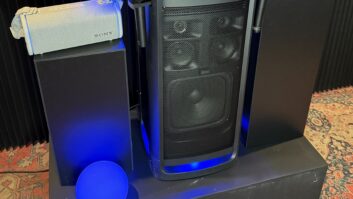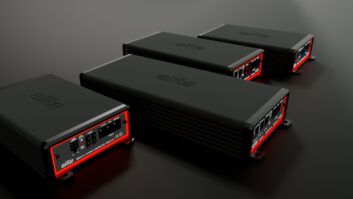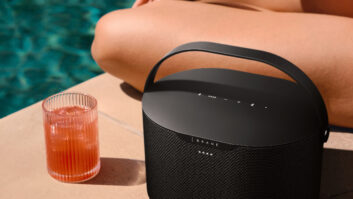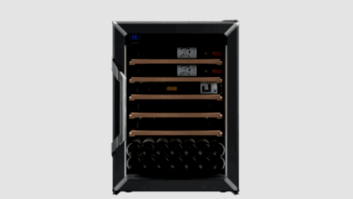In separate announcements, personal navigation device (PND) suppliers Garmin and Mio took steps to further blur the distinction between cellphones and PNDs.
Garmin unveiled what it called the industry’s first PND that doubles as a GPS-equipped smartphone, and Mio said an agreement with cellular-chip supplier Qualcomm could yield a similar product or a cellular-connected PND, which could use an embedded cellular modem to receive traffic updates and search the Internet for local business listings.
Garmin’s touchscreen-equipped Nuvifone, due in the United States and Europe in the third quarter, differs from currently available cellphones that provide turn-by-turn driving instructions. Those cellphones, which generally feature small screens, use cellular airwaves to access map data in real time while the user is driving. The Nuvifone, on the other hand, features a PND-size 3.5-inch touchscreen and preloaded maps much like a traditional PND. The Nuvifone won’t have to rely on a good cellular connection to direct its user to a destination, but it can use cellular to get real-time traffic updates.
“This is the breakthrough product that cellphone and GPS users around the world have been longing for — a single device that does it all,” claimed Garmin president/COO Cliff Pemble.
The Nuvifone, which will also feature Internet browsing and messaging, will use W-CDMA HSDPA cellular technology, which is used by GSM carriers that are upgrading their networks. Messaging features include email and instant messaging.
Mio didn’t say which technology its devices would use, but Qualcomm offers chipsets for CDMA 1x carriers and W-CDMA carriers.
“Garmin is the market leader in PNDs and perhaps, much like Apple, recognized that its franchise is migrating somewhat to mobile phones, so they are going to be a player there,” said Ross Rubin, industry analysis director for The NPD Group.
Garmin’s Nuvifone will feature an opening menu whose icons bear the words “call,” “search,” and “view map.” When the Nuvifone is placed in a car dock, the phone’s GPS receiver automatically turns on, the navigation menu activates and hands-free calling is enabled. A Google local search function enables Internet searches for locations such as coffee shops. Users also see a Web-based rating of the shops.
The device will come with preloaded maps of North America, or Eastern and Western Europe, or both. It will announce the street names for upcoming turns, and it includes the company’s “Where am I?” feature, which lets users touch the screen to display the car’s exact latitude and longitude; the nearest address and intersection; and the closest hospitals, police stations and gas stations.
Users can also bookmark their location after parking their vehicle, then take the device with them to find their car later.
Other features include built-in camera and videocamera with photo geo-tagging, which marks the latitude and longitude at which a picture was taken so users can navigate to that site in the future. It also features built-in portable media player functions such as MP3 and AAC audio playback and MPEG-4 video playback. The phone uses its own operating system, noted Rubin.
Garmin said it is pursuing carrier relations but declined to comment on whether it would also sell the device unlocked direct to retailers.
Mio’s collaboration with Qualcomm is expected to produce PNDs with cellular connections to real-time traffic updates, voice-call capabilities and other functions. A spokesman for Mio however noted that the deal could include smartphone products as well. “Mio market smartphones in Asia and Europe. This announcement is not necessarily exclusively for PNDs.”
Mio’s devices will use Qualcomms’ QST1100 cellular chipset, which is the first chipset to integrate GPS, cellular connectivity and application processing, said Qualcomm.













